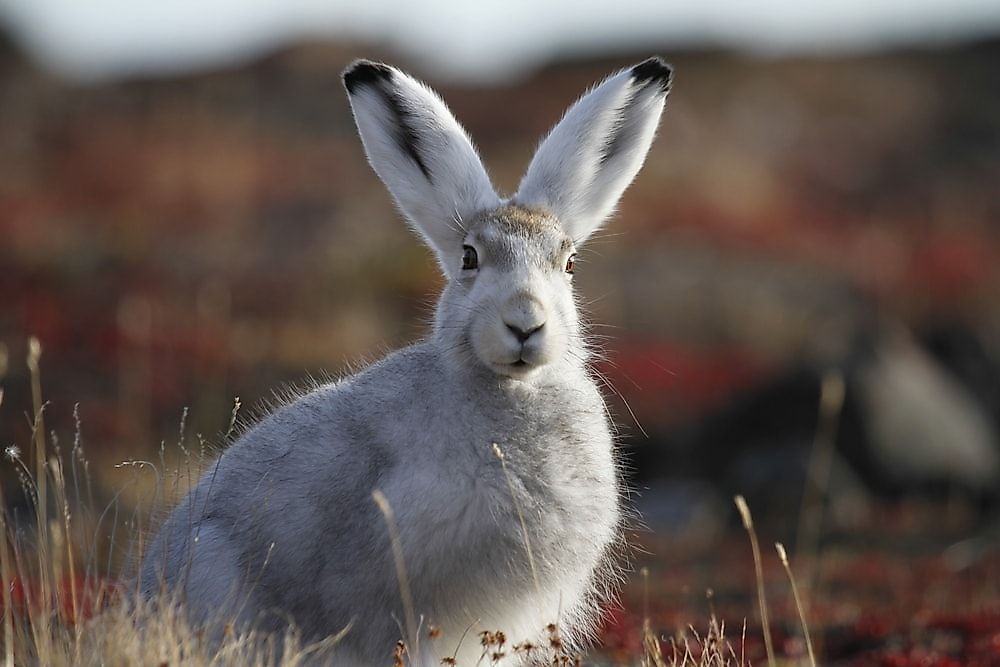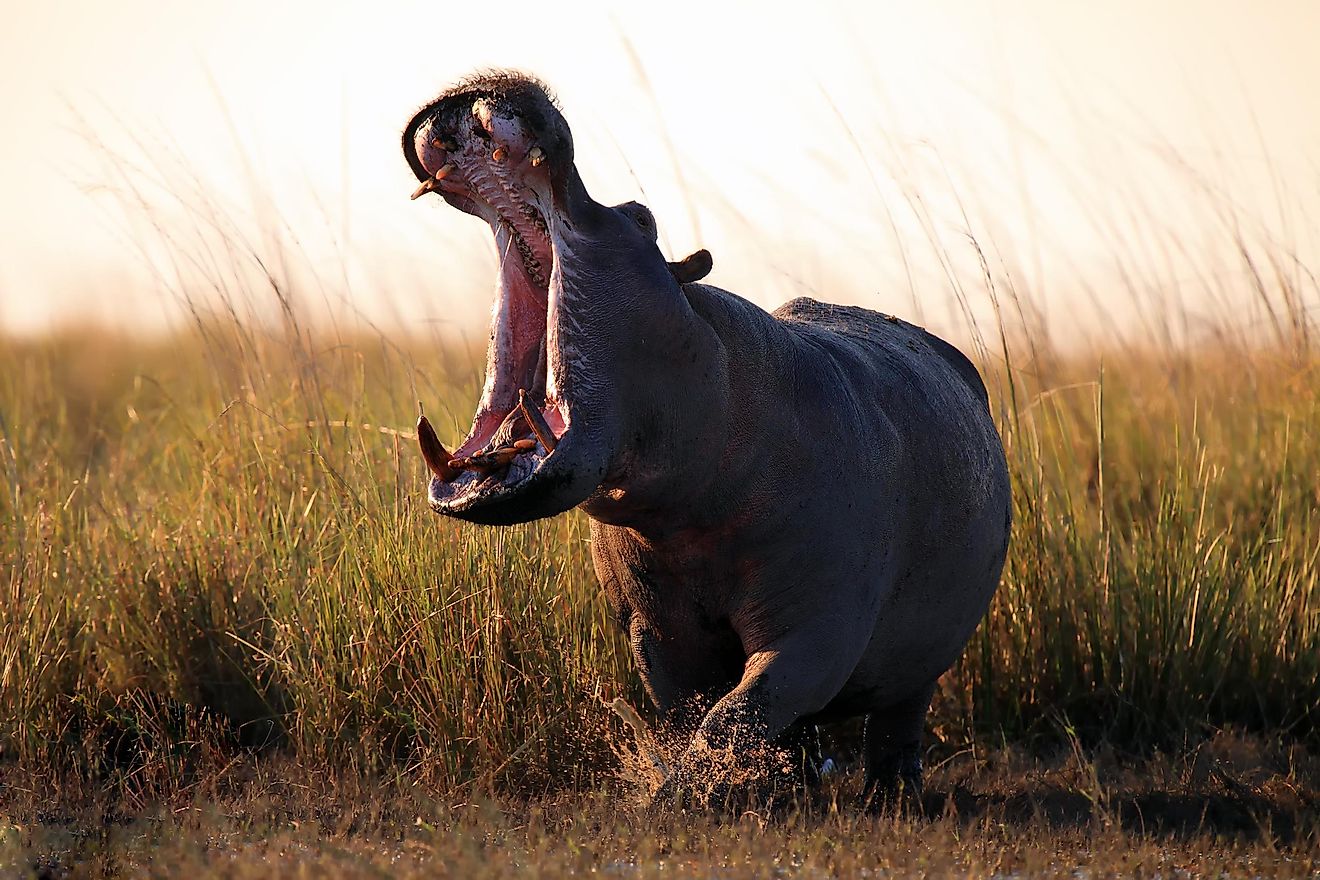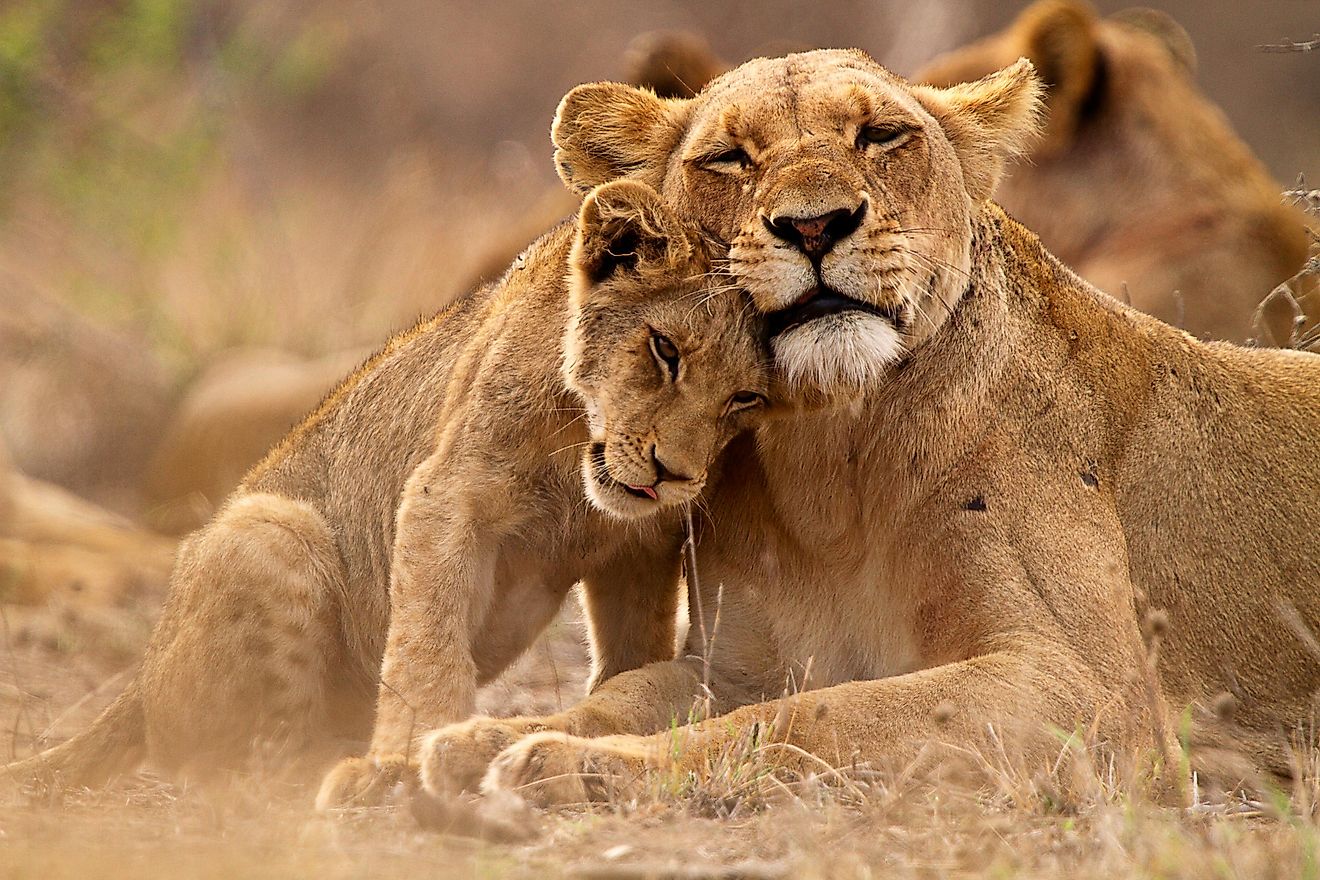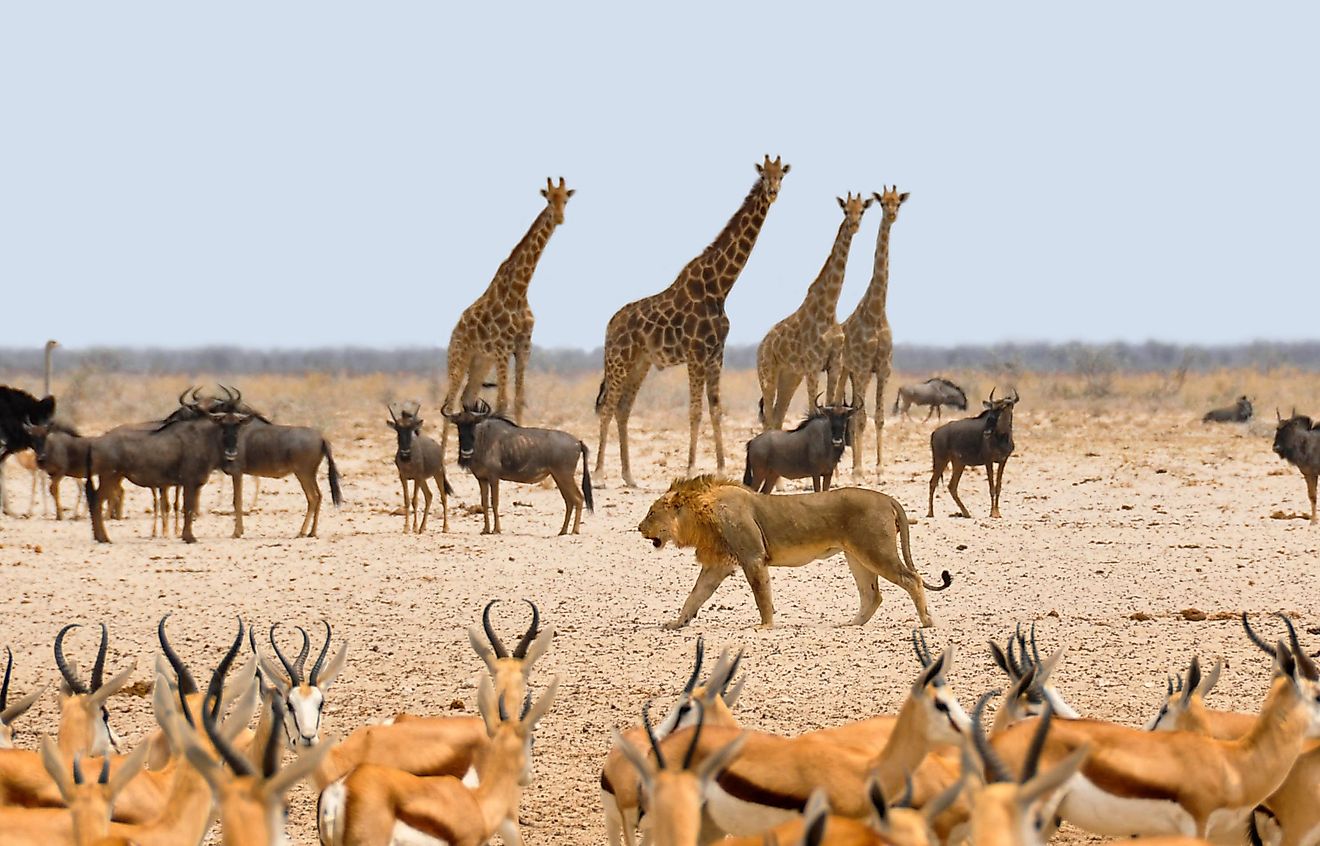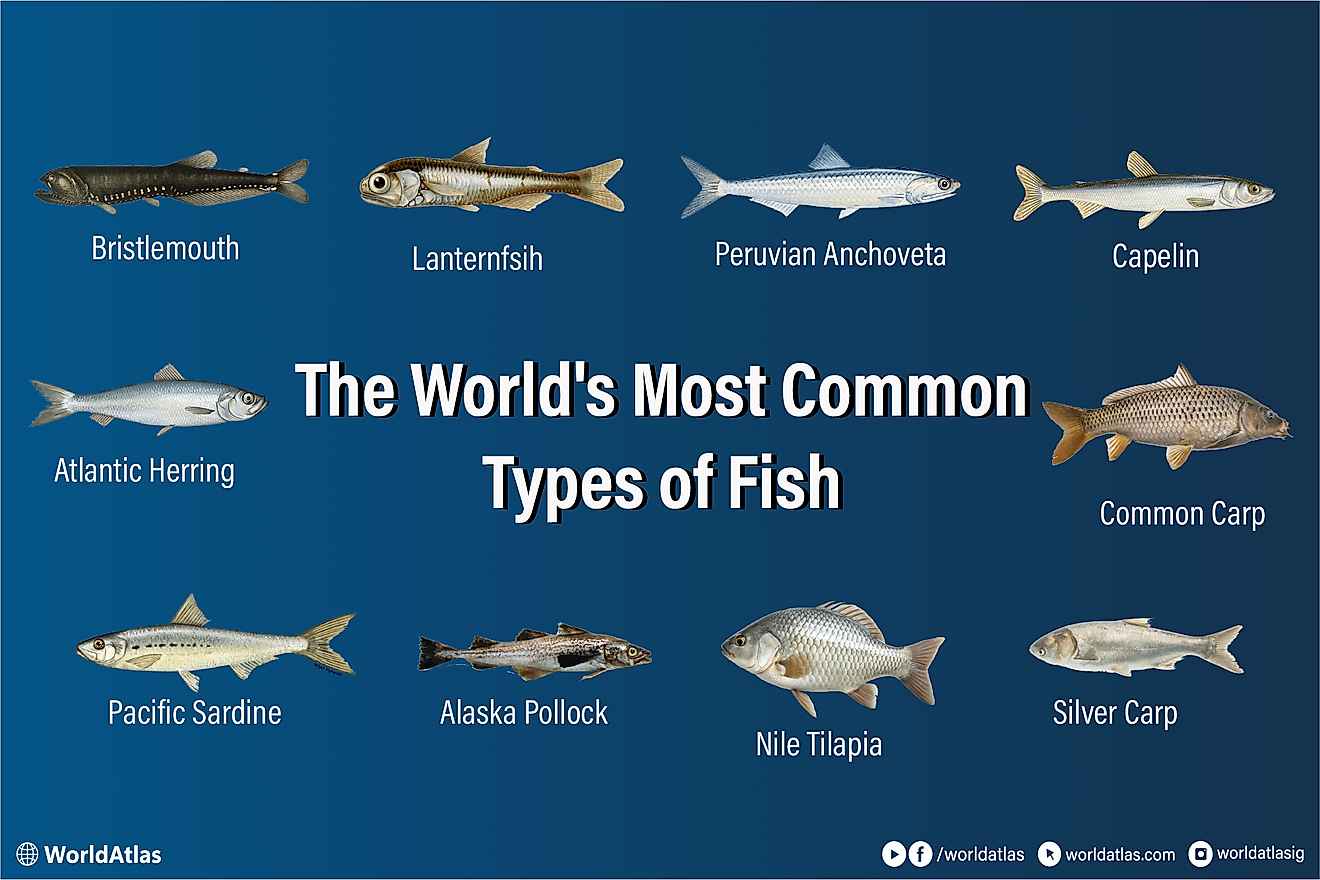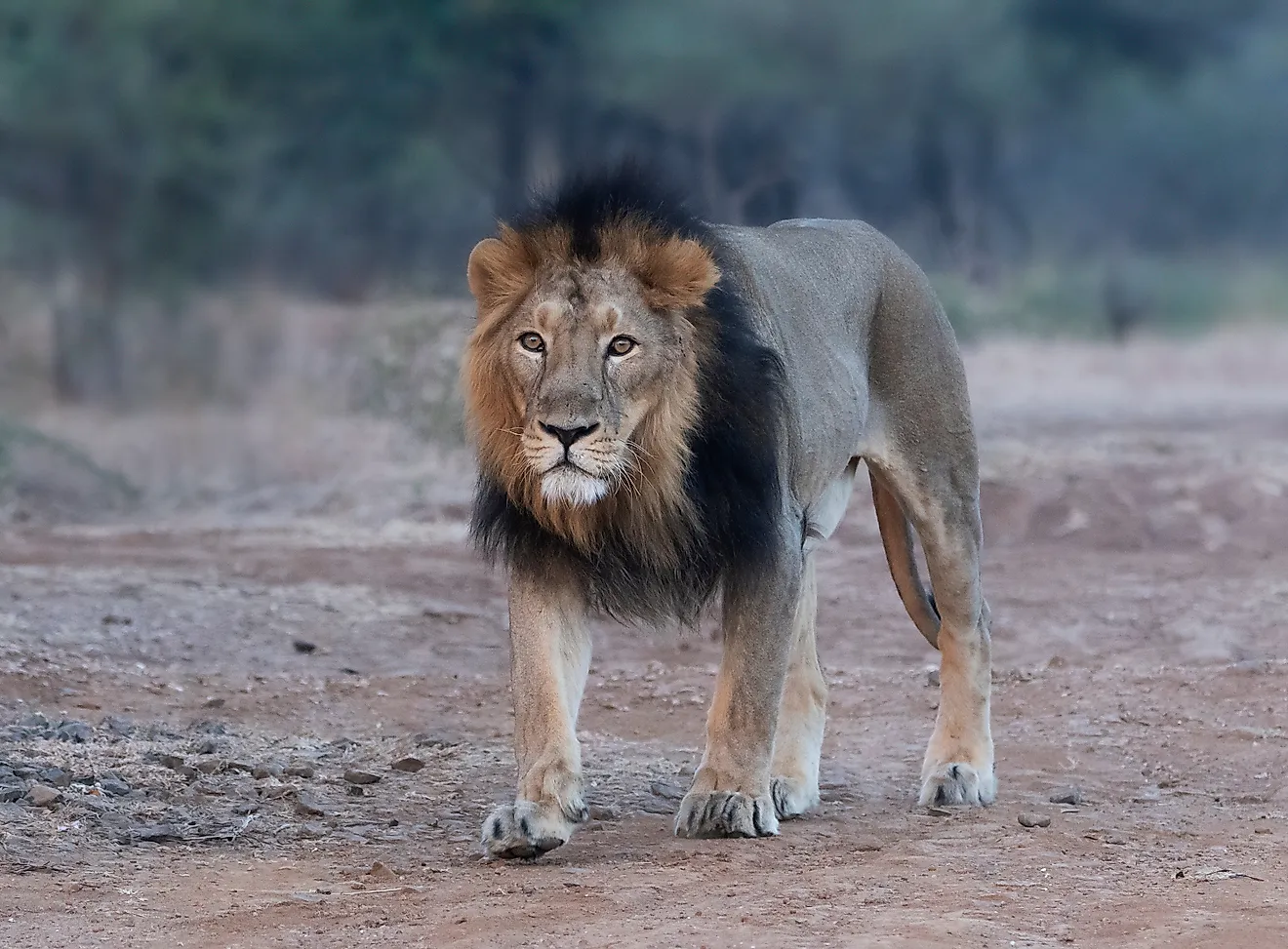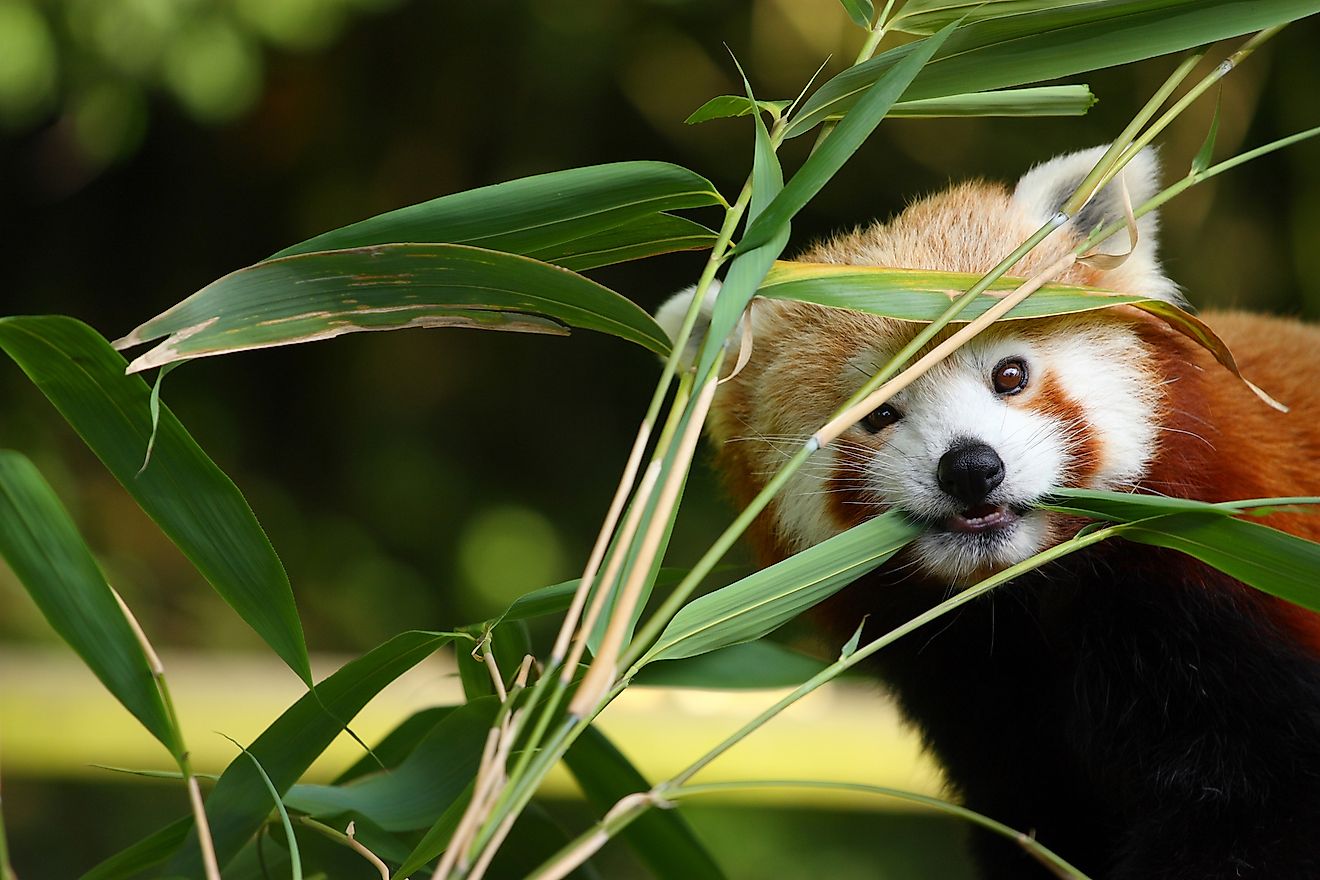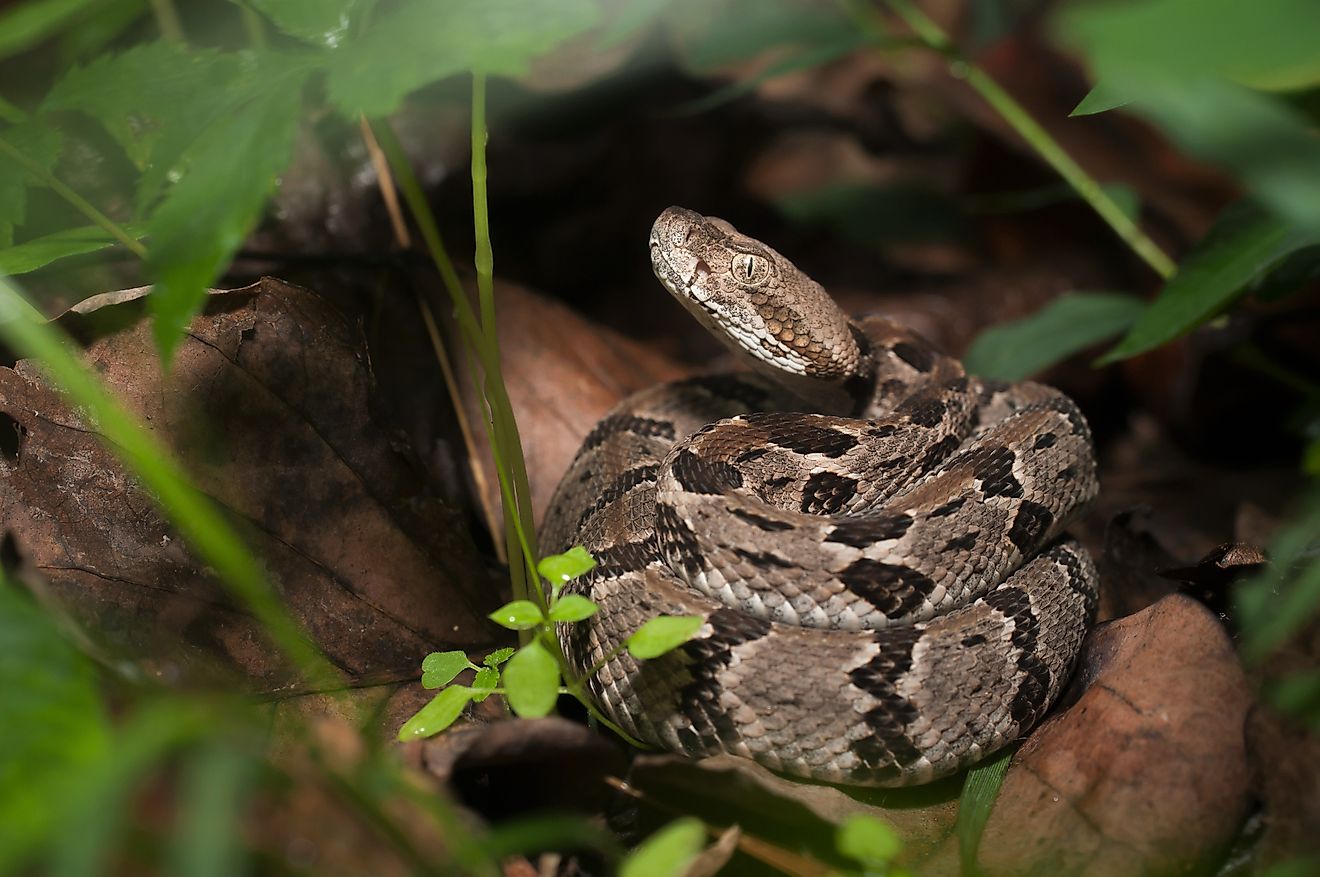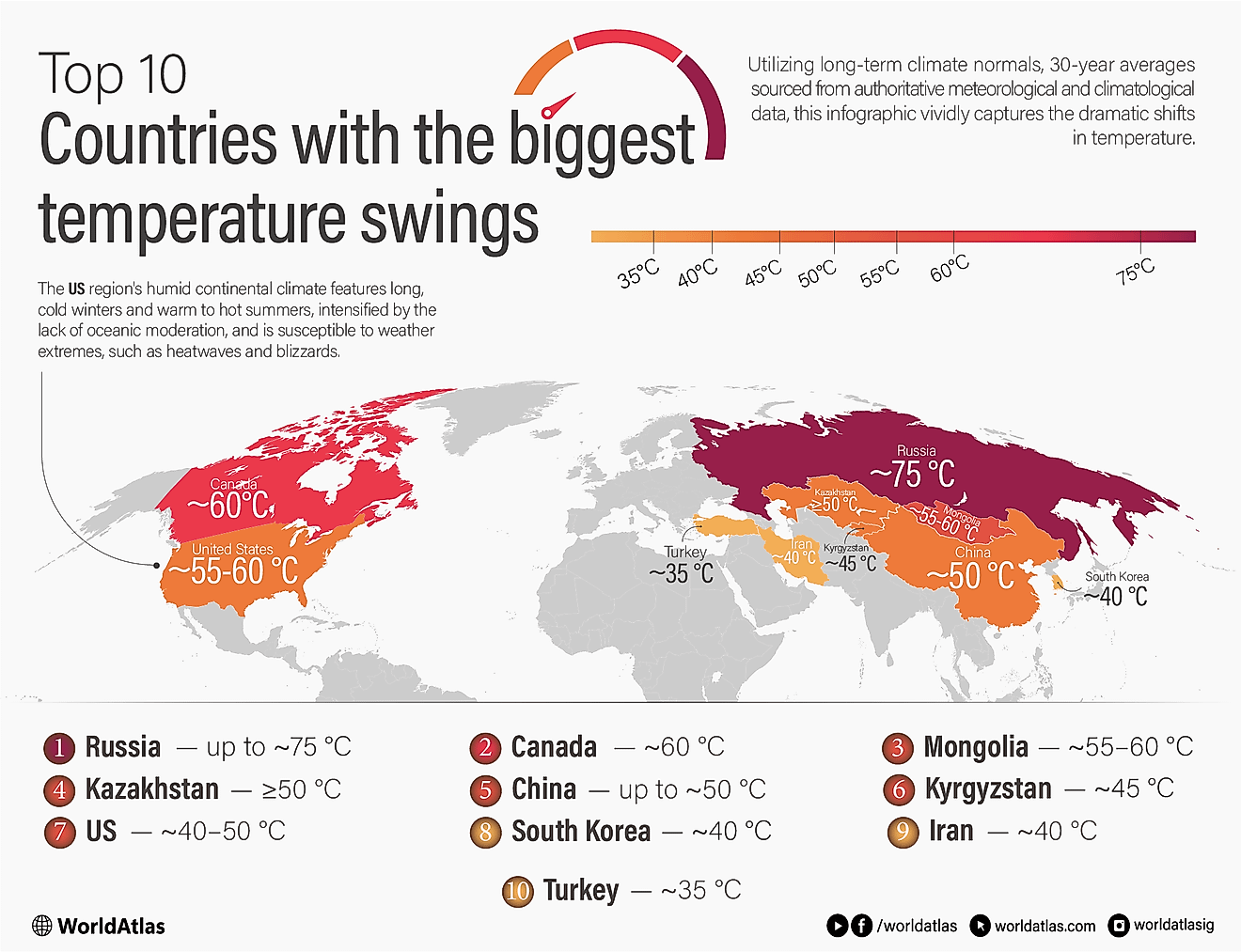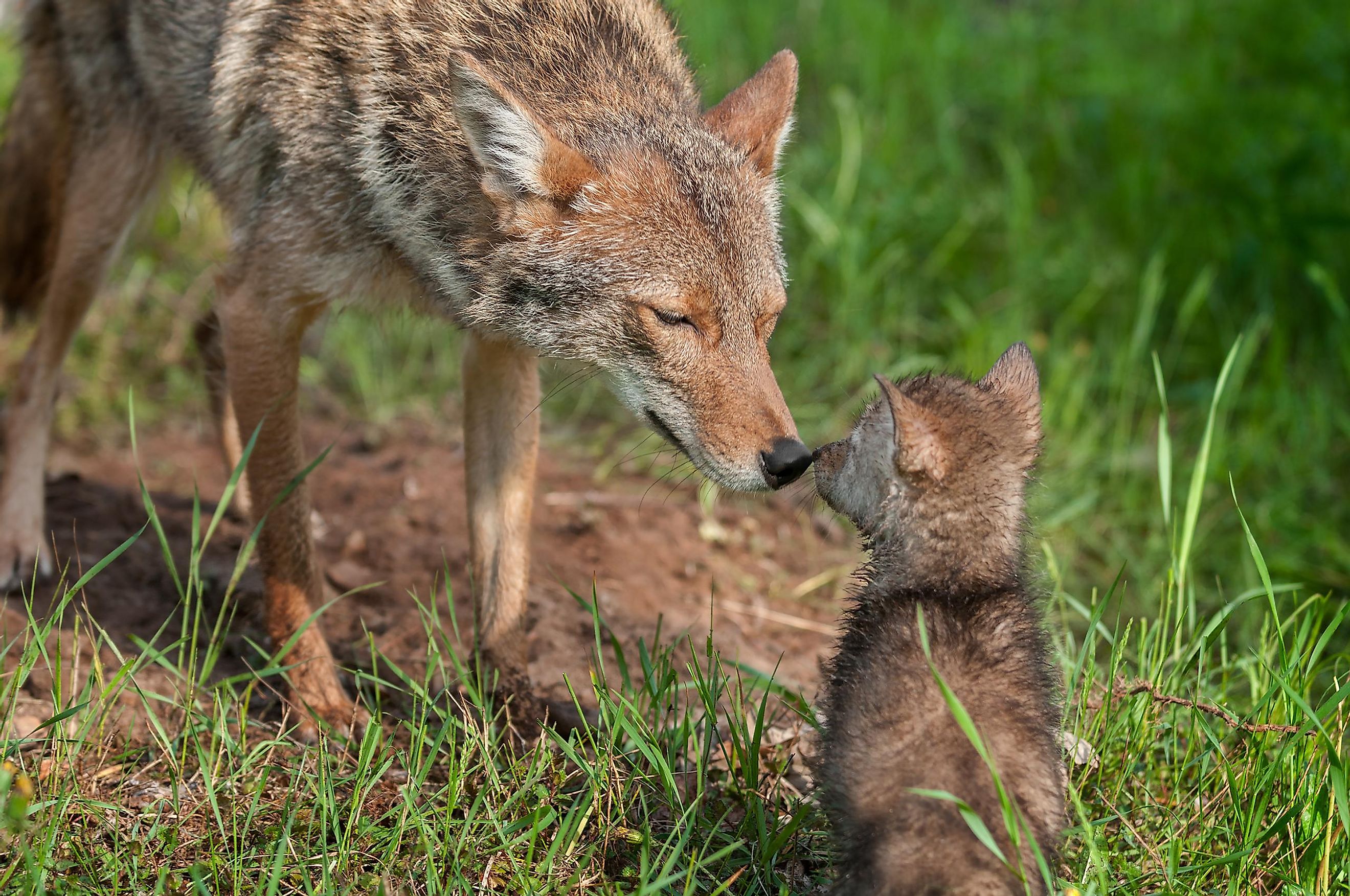
Coyote
Coyotes (Canis latrans) are many things to many people. For instance, they often represent a cunning, curious, and even creative character in Native American folklore, but they are also a reviled pest to pet-loving suburbanites and livestock-owning farmers, or by those who root for the roadrunner on Saturday mornings. But this member of the Canidae family, like all wild, gene-propagating animals, is just a survival machine – albeit, a particularly opportunistic one that has been able to adapt to an ever-changing, human-dominated landscape. Whereas once they stuck to the prairies and deserts, they have since pivoted into new habitats across most of North and Central America, including the margins of major cities. In fact, coyotes have been so flexible over the generations that their overall population is estimated to be at an all-time high, and increasing.
Taxonomy And Subspecies
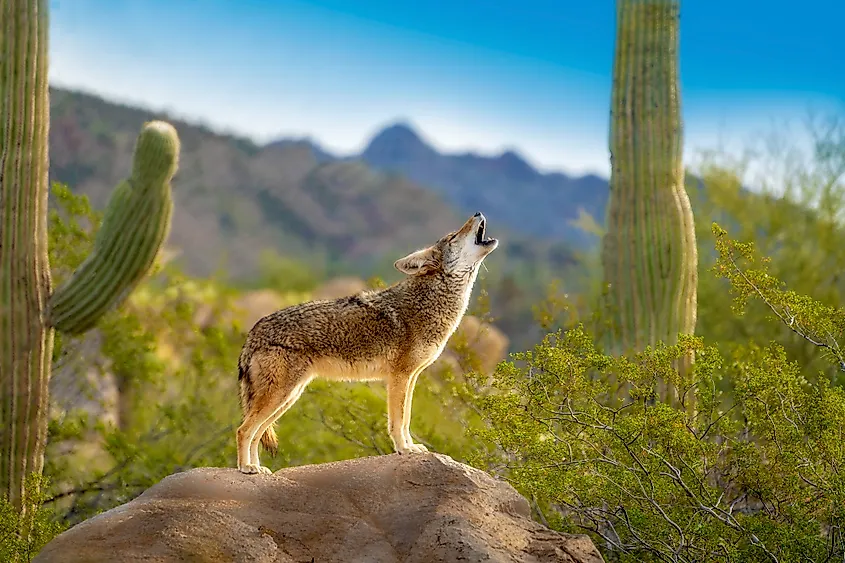
The coyote, or as it is also known, brush wolf or prairie wolf, is a member of the Canidae family, which includes such well-known and lovable cousins as wolves, dogs, foxes, and jackals – all of which share a common ancestor. The earliest known fossil evidence dates the speciation of the coyote to at least around two-million years. It is thought that they descended from a fox-like canid that lived 10.3 to 3.6 million years ago. The following is the full scientific classification for the coyote.
Kingdom: Animalia
Phylum: Chordata
Class: Mammalia
Order: Carnivora
Family: Canidae
Genus: Canis
Species: Canis latrans
There are also 19 known subspecies of coyotes that have evolved varying traits due to the environment they have adapted to, or through interbreeding with wolves (coywolves) or dogs (coydogs).
- Belize coyote
- Durango coyote
- California Valley coyote
- Colima coyote
- Honduras coyote
- Lower Rio Grande coyote
- Mearns coyote
- Mexican coyote
- El Salvador coyote
- San Pedro Martir coyote
- Tiburón Island coyote
- Texas plains coyote
- Mountain coyote
- Peninsula coyote
- Plains coyote
- Southeastern coyote
- Northern coyote
- Northwest coast coyote
- Northeastern coyote
Appearance
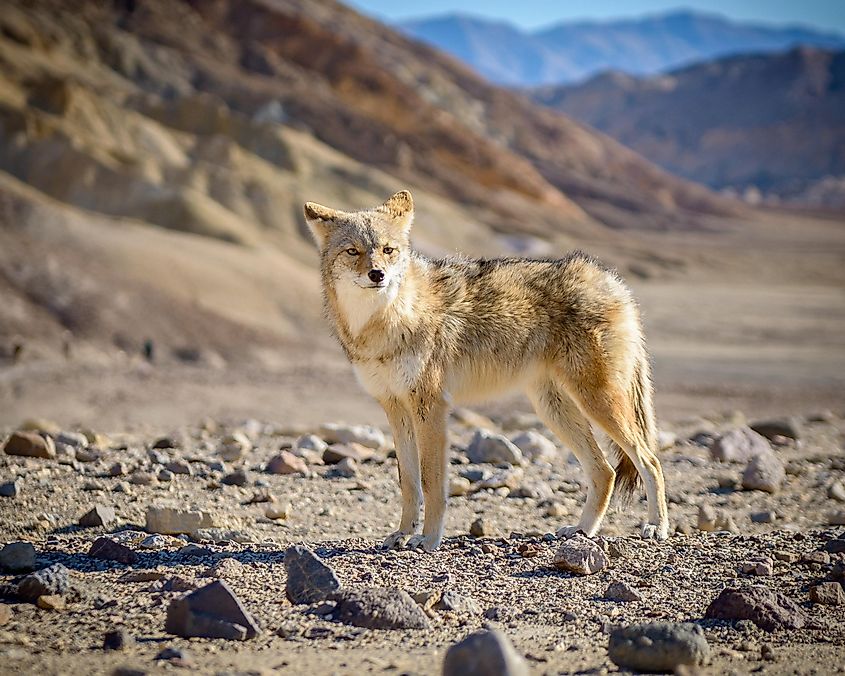
Coyotes generally reach between 32 and 37 inches in length (head and body), with their tails extending another 16 inches. Their weight, however, demonstrates a greater range – anywhere from 20 to 50 pounds. Coyotes living in the Eastern part of North America tend to be larger than in the West, with bigger heads and teeth, longer legs, and bushier tails, totalling upwards of 20 pounds of extra mass (thought to be the result of past interbreeding with regional wolves), and those living in the North tend to be larger than those in the South. This is also a dimorphic species, with males exhibiting the greater physique by a small to moderate margin. Overall, coyotes are on par with medium-sized dogs, but are smaller than wolves.
In terms of the superficial aesthetic, a coyote's fur may be a combination of gray, white, tan, reddish, or brown (depending on the region and subspecies), often with a white, or pale underbelly. They have narrow, pointed snouts, full, erect ears (often with reddish tinges behind them, as well as around the face), slender legs, yellow eyes, and a long, bushy, black-tipped tail. Subspecies living in colder climates grow longer, fuller coats in the winter, before switching out for a shorter, lighter arrangement in the summer.
Habitats And Population Status
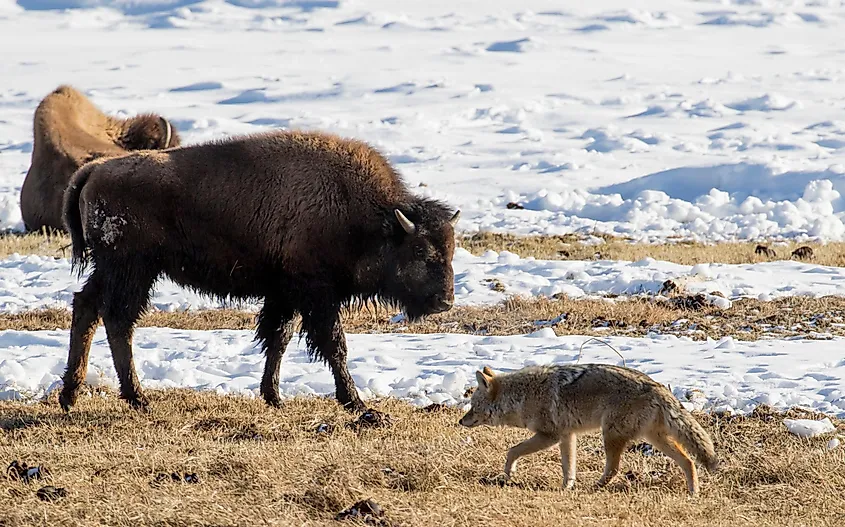
When the first Europeans arrived in North America, coyotes were mostly confined to the prairies and deserts of the middle part of the continent. However, they quickly adapted to new habitats, willingly shifting into forests, mountains, and nowadays, even cities (from the suburban fringes to downtown parks) – reaching as far North as Alaska, as far South as Panama (and pushing ever closer to the Colombian border); West to California, and East to the Canadian province of Newfoundland. The only niche they have not yet shifted into is the polar region.
It is believed that the growing presence of humans has actually facilitated the population growth of coyotes, because of the extension of open areas created by deforestation, as well as the large-scale hunting of their top predators, such as wolves, cougars, and bears. Whatever the confluence of factors may be, and despite the pressures that humans also put on coyotes (more on that shortly) the population of these crafty canines is most-likely at an all-time high and trending further upward. As a result, they are listed as "Least Concern" by the International Union for Conservation of Nature (IUCN).
Behavior And Diet
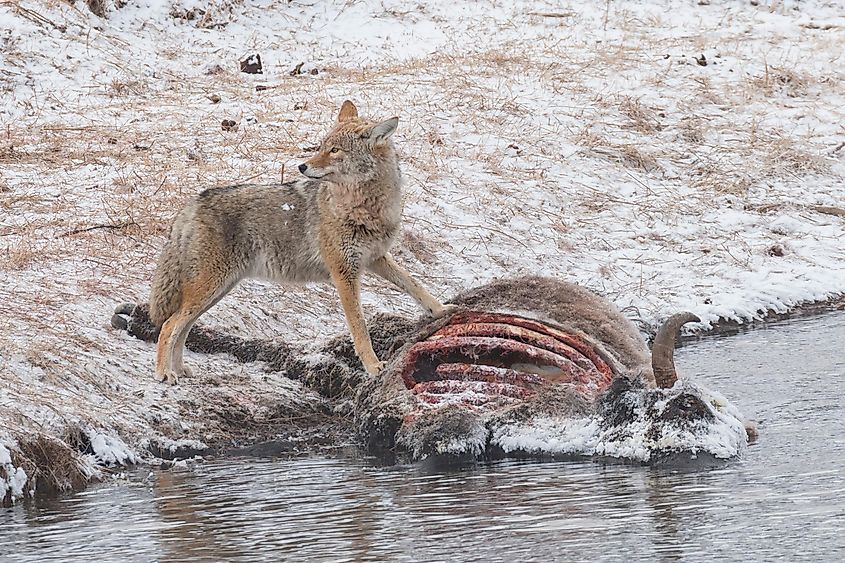
Coyotes are omnivores and opportunistic hunters that mostly focus on small to medium-sized prey. Though they prefer to live in packs of five or six (but as large as 20) that are led by an alpha-male and solidified by strong familial bonds (though many are also solitary), they tend to hunt alone or in pairs, unless attempting to fell a sizable opponent, such as deer. Most often, they'll hunt rabbits, roddents, and fish, and will also consume insects, frogs, snakes, carrion, fruit, grass, and other vegetable matter. If their standard food sources are limited, or if urban populations have become overly-habituated with humans, they may also choose to pick off cats and dogs, or sift through garbage and other human-related sources of food. Similarly, farmers sometimes have to contend with coyotes turning their attention to smaller livestock. Regardless of the target, coyotes are typically crepuscular (i.e. the most active at dawn and dusk), playing into their strength of low-light vision – though they have demonstrated a shift toward nocturnal patterns in populated areas as a strategy to avoid humans.
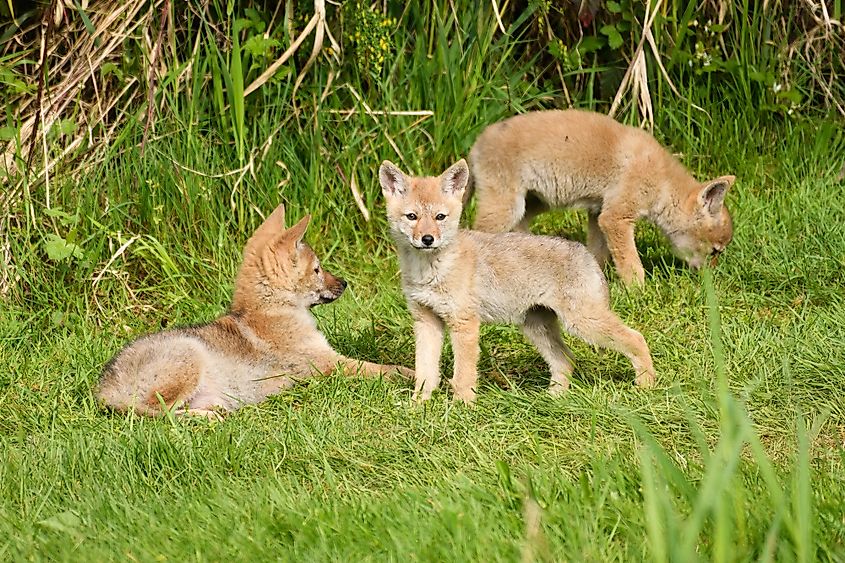
Coyotes follow a predictable annual breeding cycle. Females enter estrus between January and March, followed by a gestation period of 63 days. This results in litters of pups (six on average) arriving in the spring. For the first 10 to 12 days they are completely blind and deaf, meaning they are entirely reliant on their parents. However, they mature quickly after that, following along for hunts after about four months. Approximately nine months after birth, some males will strike out on their own, while females remain in the pack. Both reach sexual maturity after about a year, however, mortality rates can be quite high during that time period. Because of the short and vulnerable child-rearing phase, coyotes usually adopt a monogamous pair-bonding strategy – either for many years at a time, or for life (as is more common in urban areas).
Anyone living in the vicinity of coyotes will be familiar with their chatty nature. They use a series of howls, yips, whines, huffs, growls, and barks (cumulatively representing the widest vocal range of any North American mammal) to communicate with and locate their pack. The classic howl is also a way to signal to rival packs, defining their territory that can range from a single square mile to as much as 30 square miles. Coyotes are aggressively territorial towards each other, especially during mating season. Urine and scat are also used to mark out boundaries.
Wild coyotes have a demonstrated lifespan of 10 to 14 years. In captivity, under optimal conditions and free from all predators, individuals have reached upwards of 20 years of age.
Humans And Coyotes
The relationship between humans and coyotes has proven to be mixed and context-dependent. The earliest inhabitants of North America have shown both reverence and caution for these creatures throughout oral folklore traditions and visual representation. For instance both the Aztecs and the Plains Indians speak of the "Old Coyote" as a lone trickster and rule breaker, but at the same time, his good and even heroic side is also acknowledged. The Aztec god, Huehuecóyotl, along with having a destructive nature, also represents music, dance, and song – a sentiment echoed in other Native American mythologies in which the coyote is presented as a creative force. The Teotihuacan, who predate both the Aztecs and Mayans, had their warriors dress up as coyotes during certain rituals in an effort to harness its power. These seemingly contradictory connotations continue to accurately portray the current dynamic.
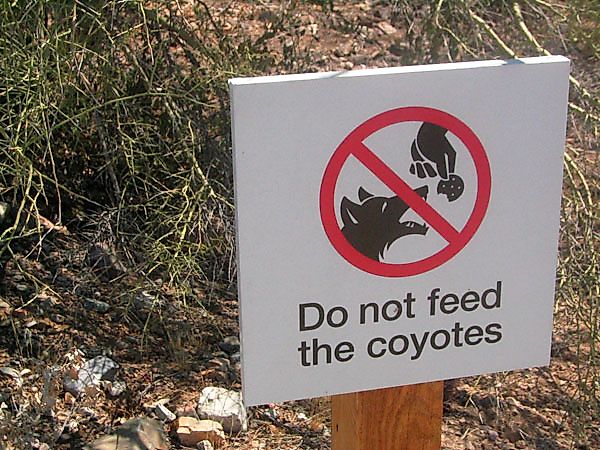
While coyotes do occasionally thrust themselves into the human world – preying on small pets or getting a little too close for comfort when they associate us with food – we are by far the greater threat. There are only two cases on record in which coyotes killed a human being, and non-lethal attacks are also quite rare. To put it in perspective, according to the humane society, more people are killed by abbeant golf balls and champagne corks each year than are bitten by coyotes. On the other hand, hundreds of thousands of coyotes are killed each year by humans because of government-led population control, hunting operations (also in the name of population control and/or for the sale of pelts), or by poisoning/traps as a pest-management strategy. Interestingly, coyote populations once-again prove resilient in the face of human intervention. In response to mass killings, the breeding scope is expanded outside of the alpha pairs (as is the natural order), and larger litters are produced.
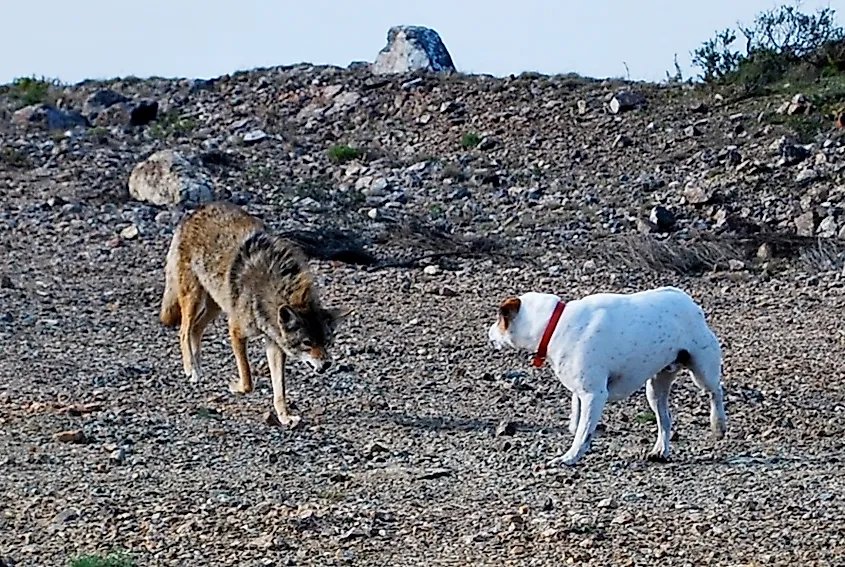
As far as mitigating the slight danger that coyotes can pose to humans and their pets, the best approach, as with any wild animals, is to give them respectful distance, never feed them, and ensure a healthy fear remains by shooing them off in non-harmful ways (should they fail to leave under their own accord during an encounter). It is also important to bring cats and dogs (as well as their food) in at night, and to use a leash in known coyote territory.
Finally, coyotes can actually benefit our immediate environment. Because of their propensity for hunting rodents (i.e. their most common food source), these elusive canines save us a lot of unpleasant pest control grunt work. Also, areas inhabited by coyotes have been shown to have a higher diversity of native birds. It is believed that since they hunt other small predators that feed on birds, such as opossums, raccoons, and (like it or not) cats, these winged creatures have a better chance of flourishing.
In the end, this North American canine, while viewed through a contentious lens by many people, is a survivor on par with any other animal on the continent. This highly-intelligent, expressive, remarkably versatile, and (if viewed from a detached perspective) beautiful being simply rolls with the punches and follows its instinctual programming. With a bit of understanding, and conscious efforts to avoid habituating urban populations, humans and coyotes can strike a synergistic balance. This has clearly been the case, for the most part, already – whether or not residents or local governments realize it.
